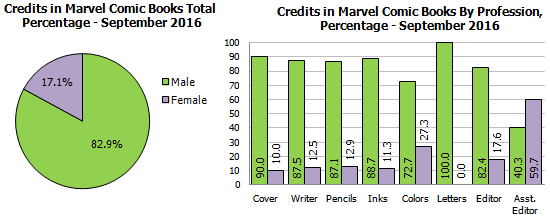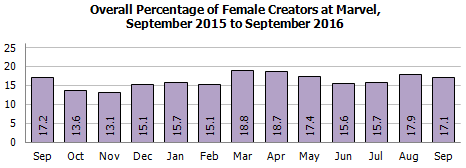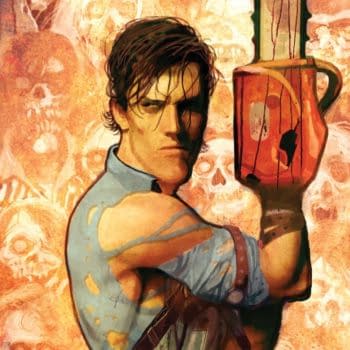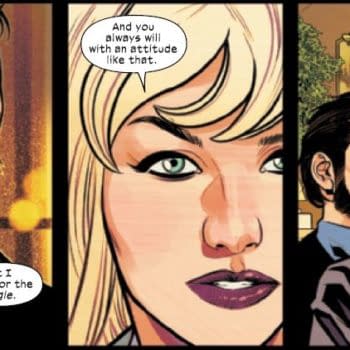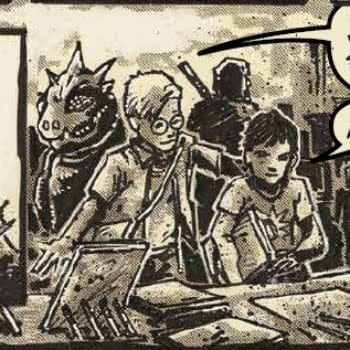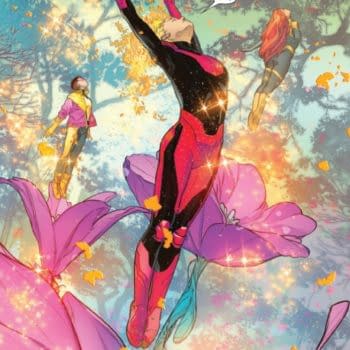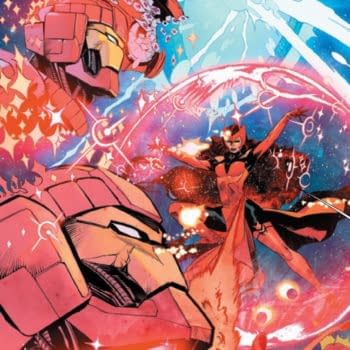Posted in: Comics | Tagged: Comics, entertainment
Gendercrunching The Comics Industry For September 2016 With Tim Hanley
By Tim Hanley
Both DC and Marvel's overall percentage of female creators dipped down slightly from their August totals in September, though each publisher remains within range of their recent highs. We also take a look at the creative side of the Big Two's stats by editor and see where women are working at DC and Marvel.
DC COMICS
For the second month in a row, DC's overall percentage of female creators dropped, but only by a small amount. In September 2016, DC Comics released 74 new comic books featuring 659 credited creators, 547 men and 112 women. Let's look at their numbers:
DC fell only 0.2% from their August total, a very modest drop. By category, there were some small changes, all within the range of 1-3%. Female cover artists, writers, pencillers, inkers, and assistant editors all slipped down, while colorists, letterers, and editors rose. The slight adjustments across the board ultimately resulted in a minor decline in female creators overall.
The Past Year at DC: While DC's September total is its lowest of the past four months, it bests all of the nine months previous:
DC appears to have settled into a new normal in the 17% range, and that's remained the standard as "Rebirth" continues to unfold. With most of the first wave now out, DC's next big shift comes with the expansion of its "Young Animals" line through the fall.
MARVEL COMICS
Marvel's overall percentage dipped down as well, landing them within 0.1% of their distinguished competition. In September 2016, Marvel put out 78 new comics with 656 credited creators, 544 men and 112 women. Here are their stats:
The publisher's overall percentage of female creators fell 0.9%, a drop that seems rather odd at first glance given that Marvel saw gains in half of their categories. Female writers, pencillers, inkers, and assistant editors all rose, while female letterers remained consistently non-existent. Female colorists and editors dropped slightly, but the primary culprit behind the overall decline was cover artists, who fell more than 4%. Marvel is heavily invested in variant covers, and so that category has a lot of creators and thus carries a lot of weight. A large drop there can sway an otherwise fairly steady month, as it has here.
The Past Year at Marvel: The September total is relatively middle of the pack compared to the last year:
Marvel is down somewhat from their past highs of the spring, but remains above their recent summer dip and well above their numbers from last fall. It's an above average month for Marvel, if only slightly so.
EDITORIAL GROUPS AT DC AND MARVEL
While a variety of different editors, assistant editors, and associate editors work at the Big Two, almost every one of them falls under the umbrella of a group editor. The term for such an editor may vary, but essentially a group editor runs a specific line of books, either editing them directly or supervising other editors under their purview. For example, at DC Mark Doyle is the group editor of the Batman books (and Wonder Woman) while at Marvel Tom Brevoort runs the Avengers book (though he's called an executive editor).
With a full month of data on hand, sorting the credits by group editor was a fairly simple task. I had to make some educated guesses on a couple of series, and a few books ended up in a miscellaneous Marvel category, but by and large each title mentioned a specific group editor. They break down thusly; first at DC:
Eddie Berganza: In charge of the Superman and Green Lantern titles.
Jim Chadwick: Runs several digital first books and a few mainline superhero titles.
Brian Cunningham: Controls the Justice League and the books of its various members.
Mark Doyle: In charge of the Batman family line and Wonder Woman.
Marie Javins: A mix of licensed properties and mainline superhero books.
Vertigo: All of the Vertigo books, combined since there aren't many of them.
And at Marvel:
Tom Brevoort: Runs the Avengers and the solo books of their members (also includes most of Wil Moss's books; Moss has an interesting corner of the Marvel world, but Brevoort is usually his executive editor).
Nick Lowe: Spider-Man and the Inhumans, mostly, with a few odds and ends.
Mark Paniccia: In charge of the X-Men, along with Daredevil and a couple other properties.
Jake Thomas: A small line of random non-Avenger, non-mutant, non-Inhuman, non-Spider books, really; he may be under a larger editorial umbrella, but the credits never specified one.
Jordan D. White: Primarily the Star Wars and Deadpool titles, with a few others.
Miscellaneous: Licensed properties, Empress, and Sana Amanat's two books, basically.
For each comic book at DC and Marvel that came out in September, I adjusted the numbers to discount the editorial ranks so we're dealing with just the creative side of the chart. This lowered the overall percentage of female creators significantly, hardly surprising change given how high the editorial numbers are above. DC fell from 17% to 11.6% female creators overall, while Marvel dropped from 17.1% to 11.5% women overall.
In terms of individual editorial umbrellas, the percentage of female creators on the creative side of the chart (cover artists, writers, pencillers, inkers, colorists, and letterers) looks like so. DC's editors are colored red and Marvel's are purple:
On the low end of things, we've got Brian Cunningham and Eddie Berganza at DC and Jake Thomas at Marvel. Cunningham's group is the lowest; the 13 books in the Justice League line employed only one female inker and one female colorist. The other 95 gigs went to men. Also, all of the books have male leads or are team books.
Berganza sitting near the bottom might not be much of a shock given the rumors that female staffers aren't allowed to work in his department because of his history of sexual harassment. Interestingly, all 3 female creator credits in Berganza's line come from variant covers, an area usually handled by a different department, so he may not have actually worked directly with a single female creator in September either.
Thomas only runs 7 books, so it's a smaller sample size than Cunningham or Berganza, but these numbers are still paltry. Even with a small number of books, decent representation is easily had.
Lowe, White, Paniccia, and Javins are tightly packed in the next few slots, with all of them below their publisher's adjusted overall total percentage of female creators. Each of them has a considerable line up as well, with many opportunities for employment. Vertigo is just above DC's average, a rather humdrum spot for a division with so many women in its editorial ranks; it'd be nice to see that reflected on the creator side of things too.
Brevoort, Doyle, and Chadwick make up the top three here. Brevoort is helped by a few big books rather than widespread representation, with Mockingbird and Patsy Walker, a.k.a. Hellcat! tipping the scales along with Civil War II: Choosing Sides #6, which happened to have a high number of female creators this month. Doyle's numbers are more widespread; of the 14 books he controls, only 2 didn't have any female creators. Chadwick's a bit patchier, in the vein of Brevoort. He gets a boost from DC Comics Bombshells and a big jump from Wonder Woman '77 Special #4, but 6 of his 11 books don't feature any female creators.
All together, this is an interesting spread of numbers, and one that shows some clear trends about where women are working at DC and Marvel. At the same time, this is only one month of data. We'll definitely have to come back to these numbers down the road and see how things have changed. Everyone's got lots of room to grow, though some more so than others.
To learn more about this statistics project and its methodology click here, and to see the previous stats click here. You can visit Tim at Straitened Circumstances and follow him on Twitter @timhanley01. His first book Wonder Woman Unbound is available now, and his new book Investigating Lois Lane: The Turbulent History of the Daily Planet's Ace Reporter was released in March 2016.





